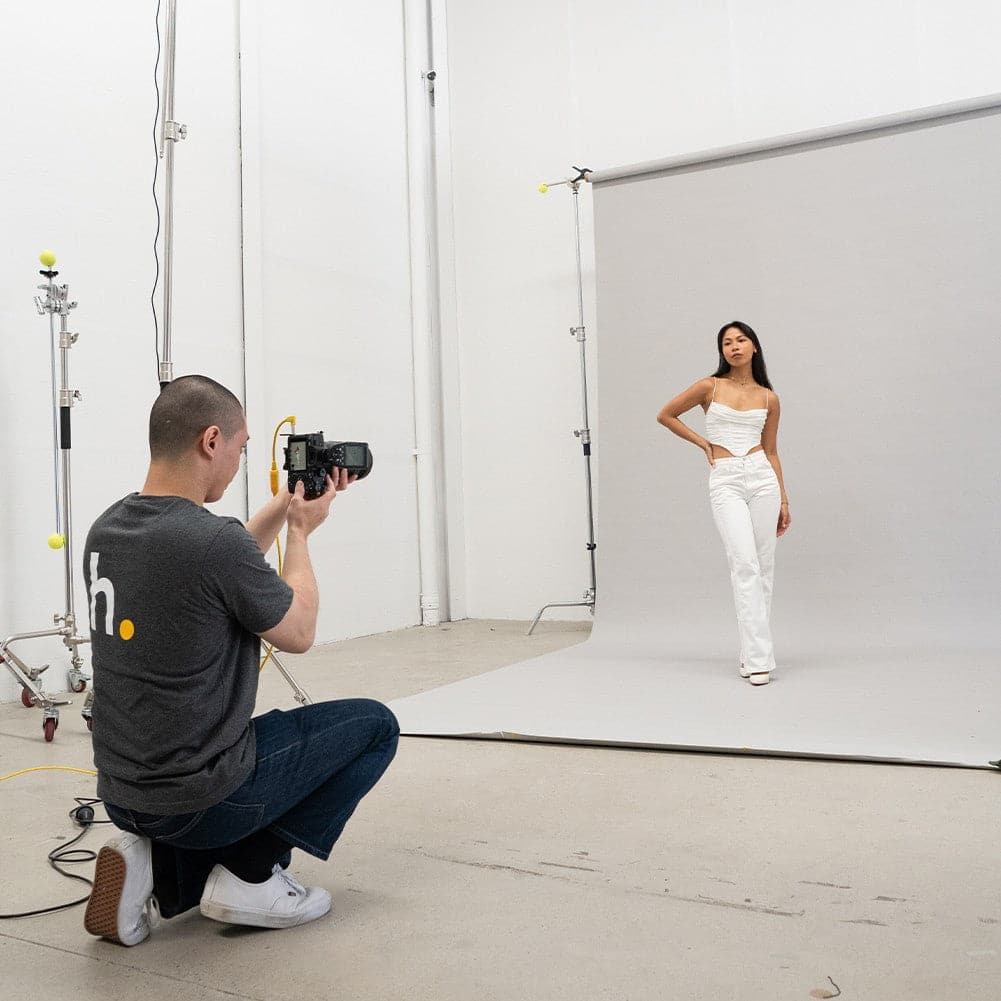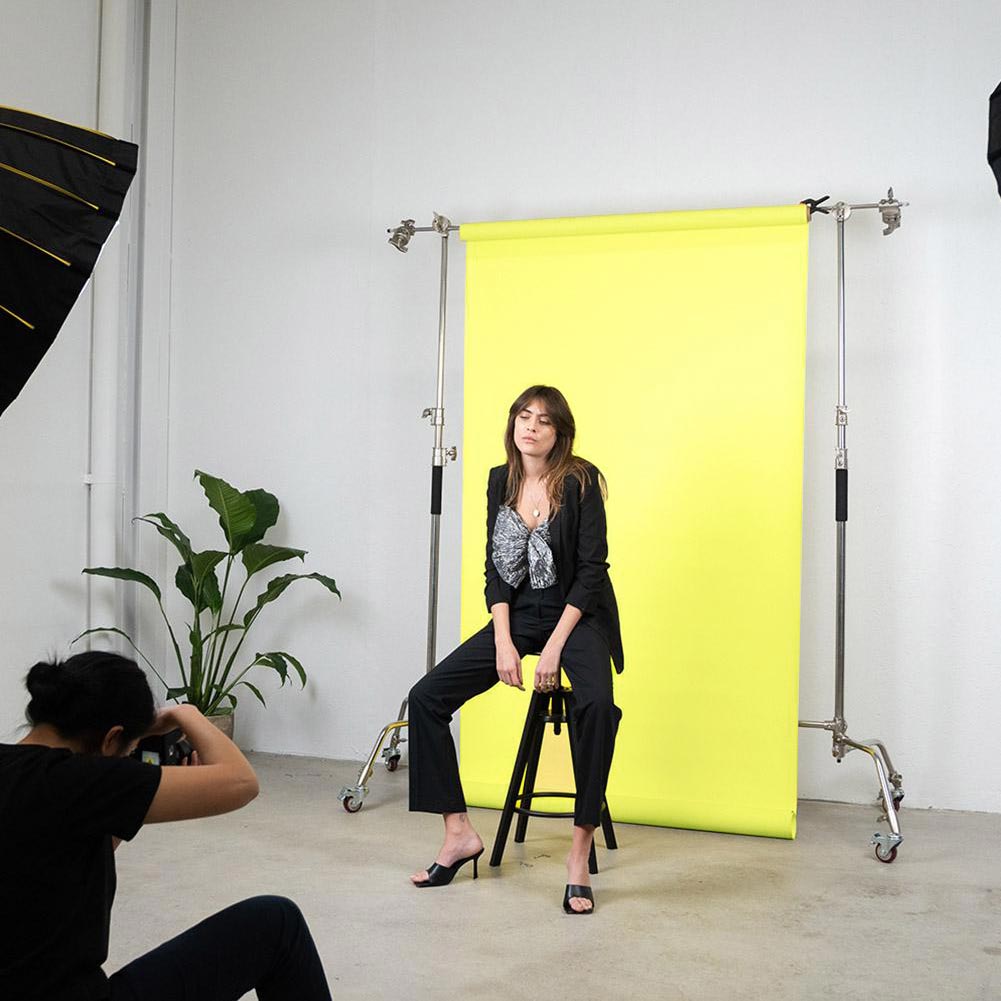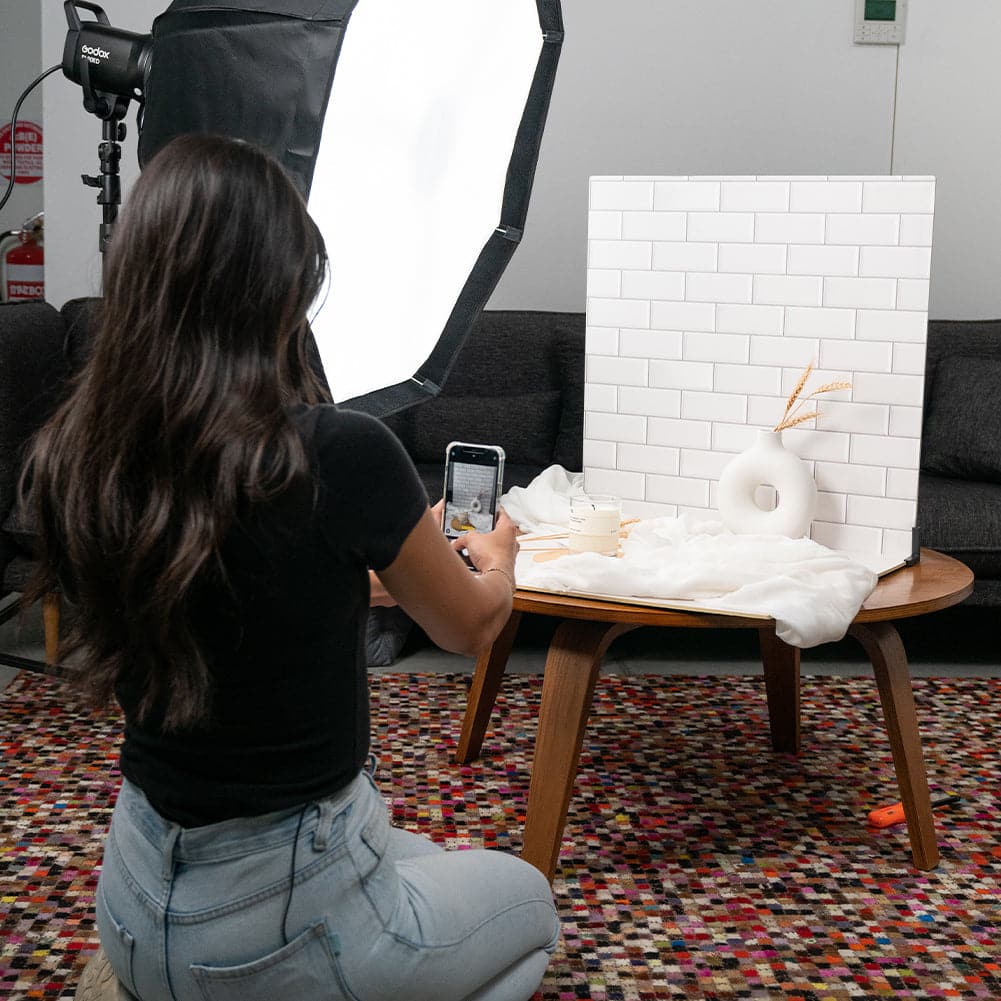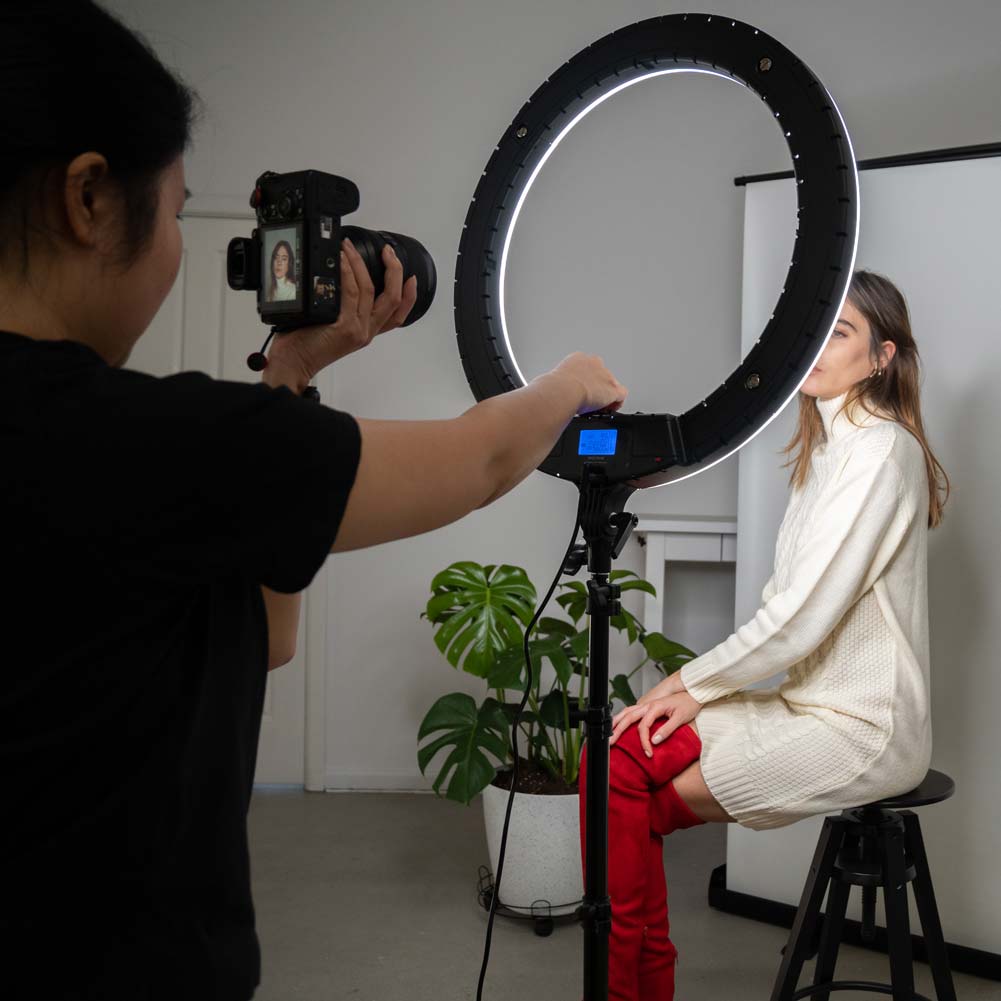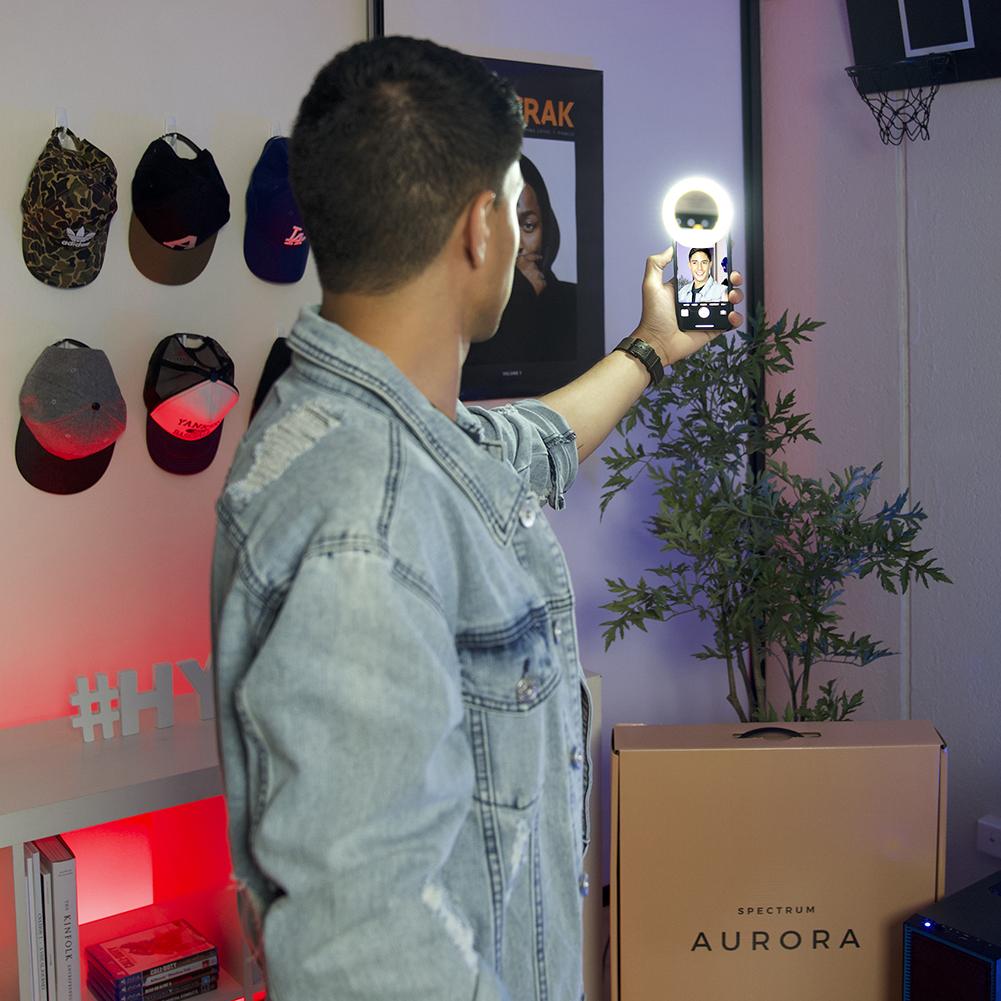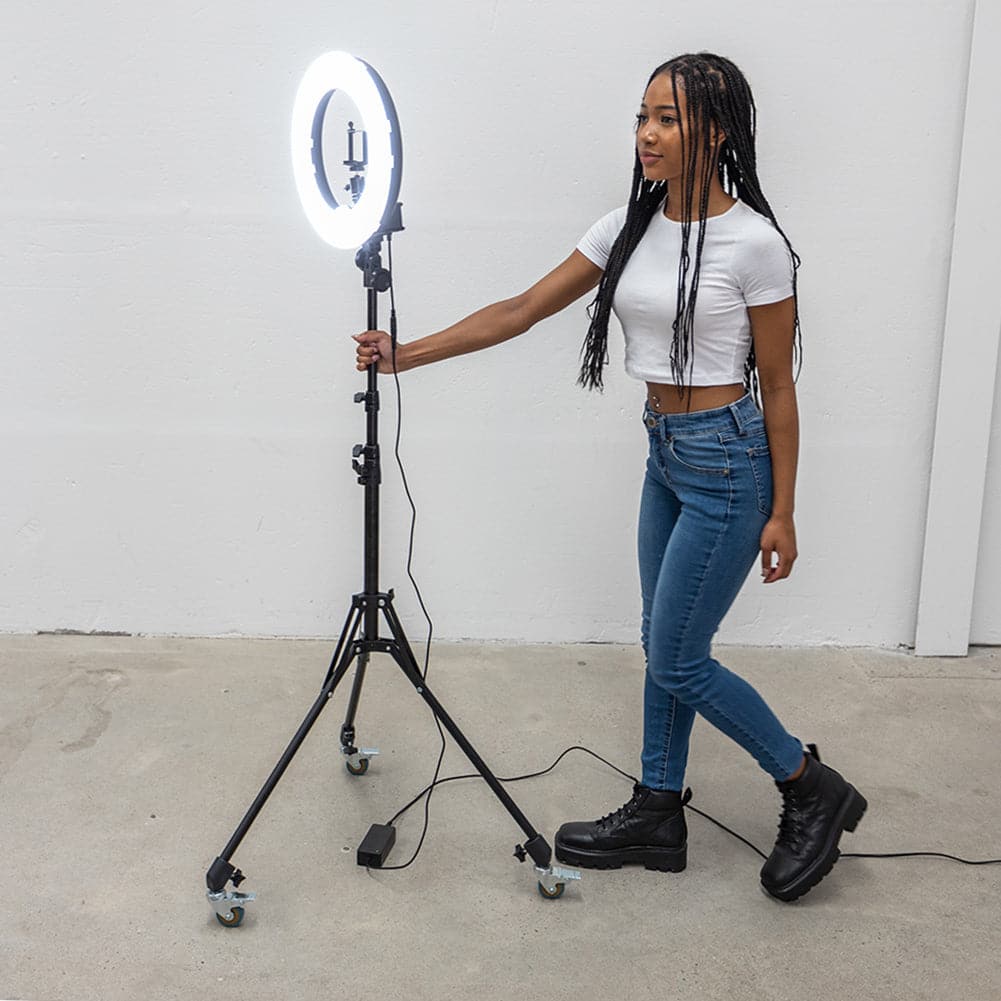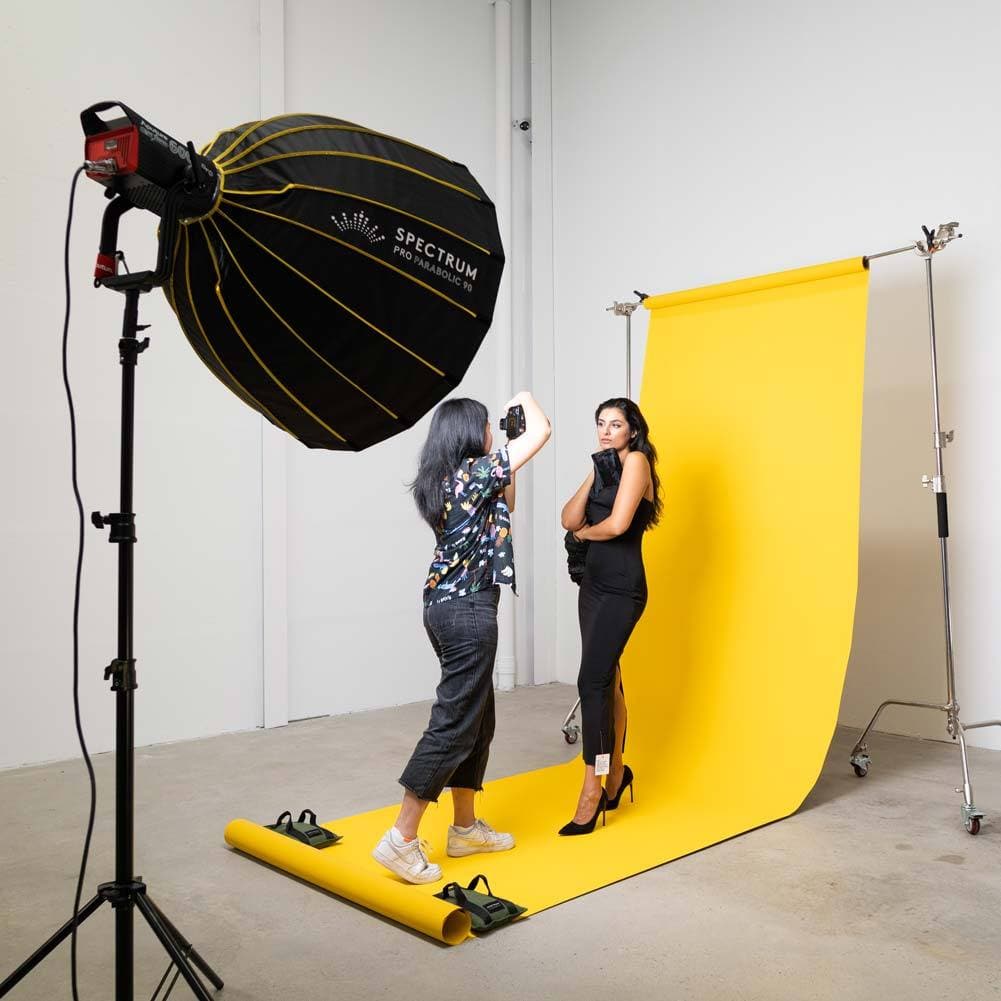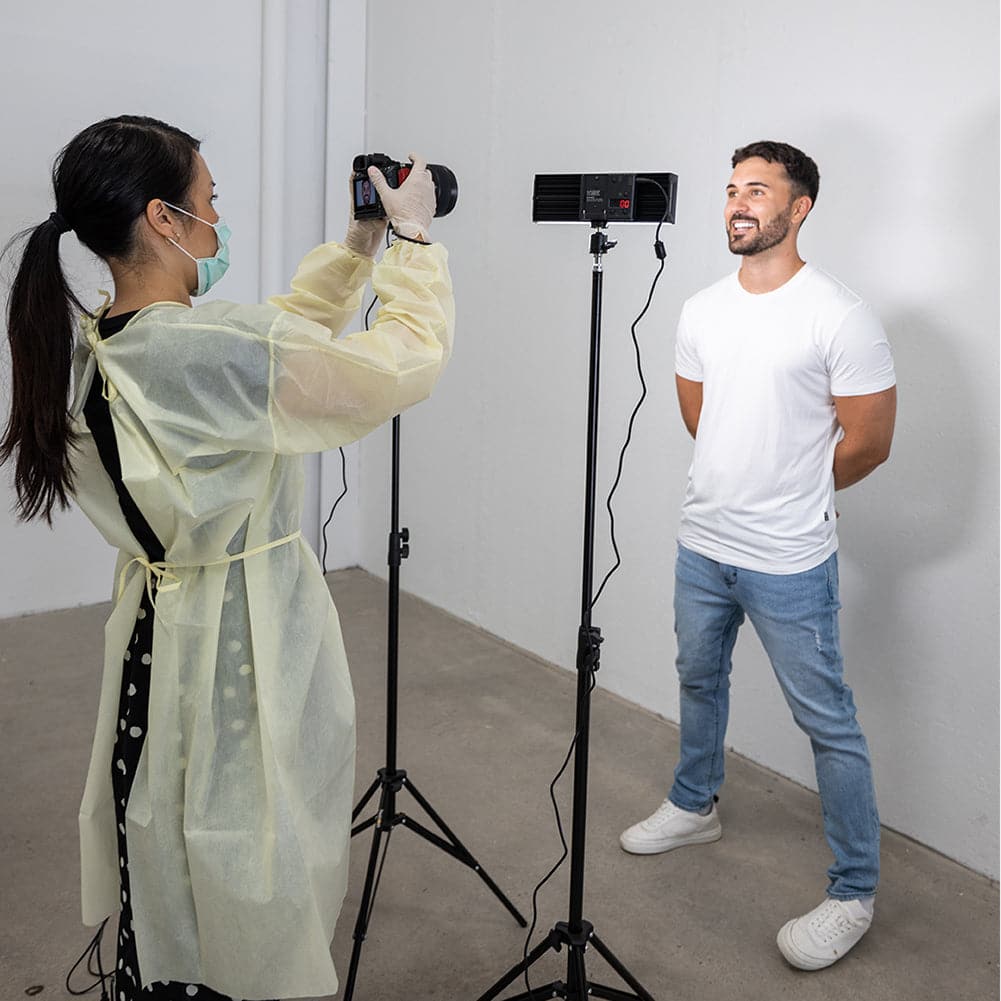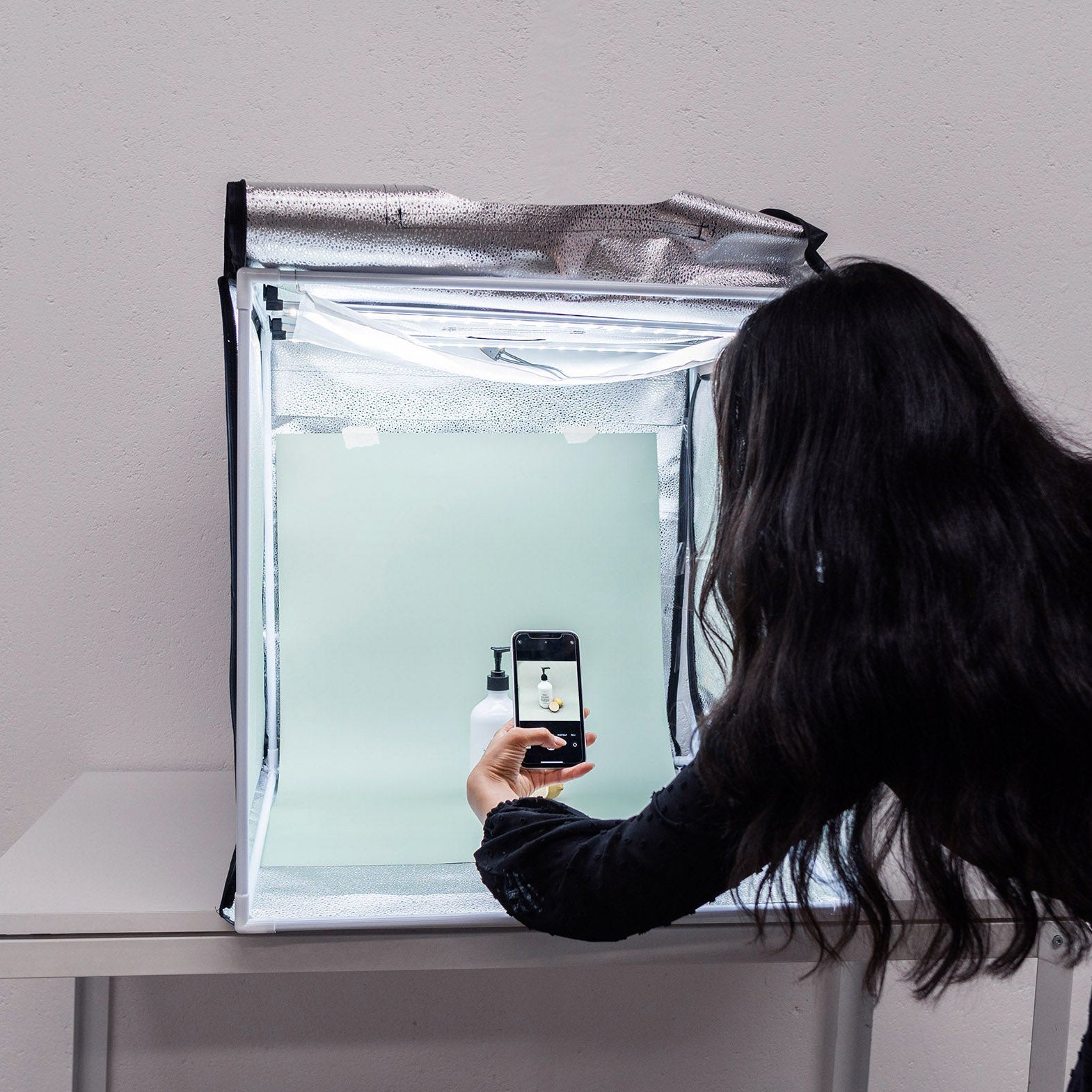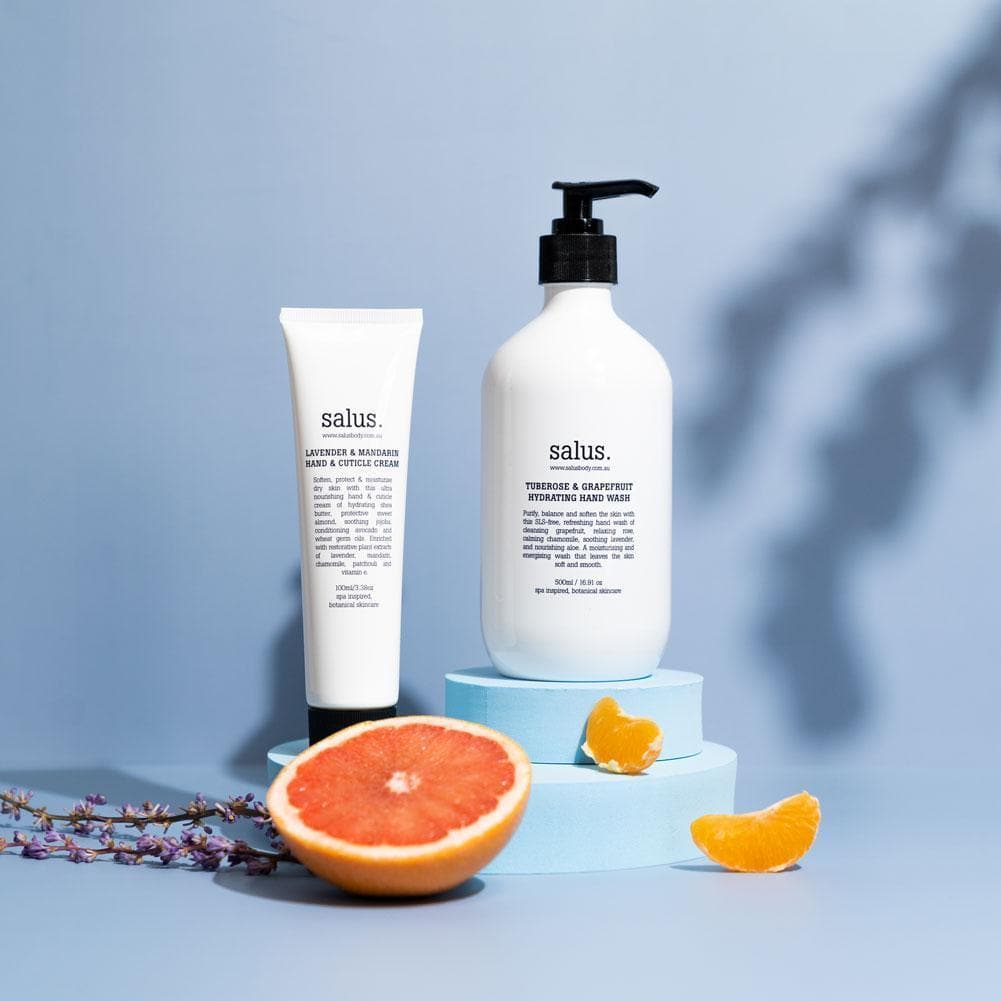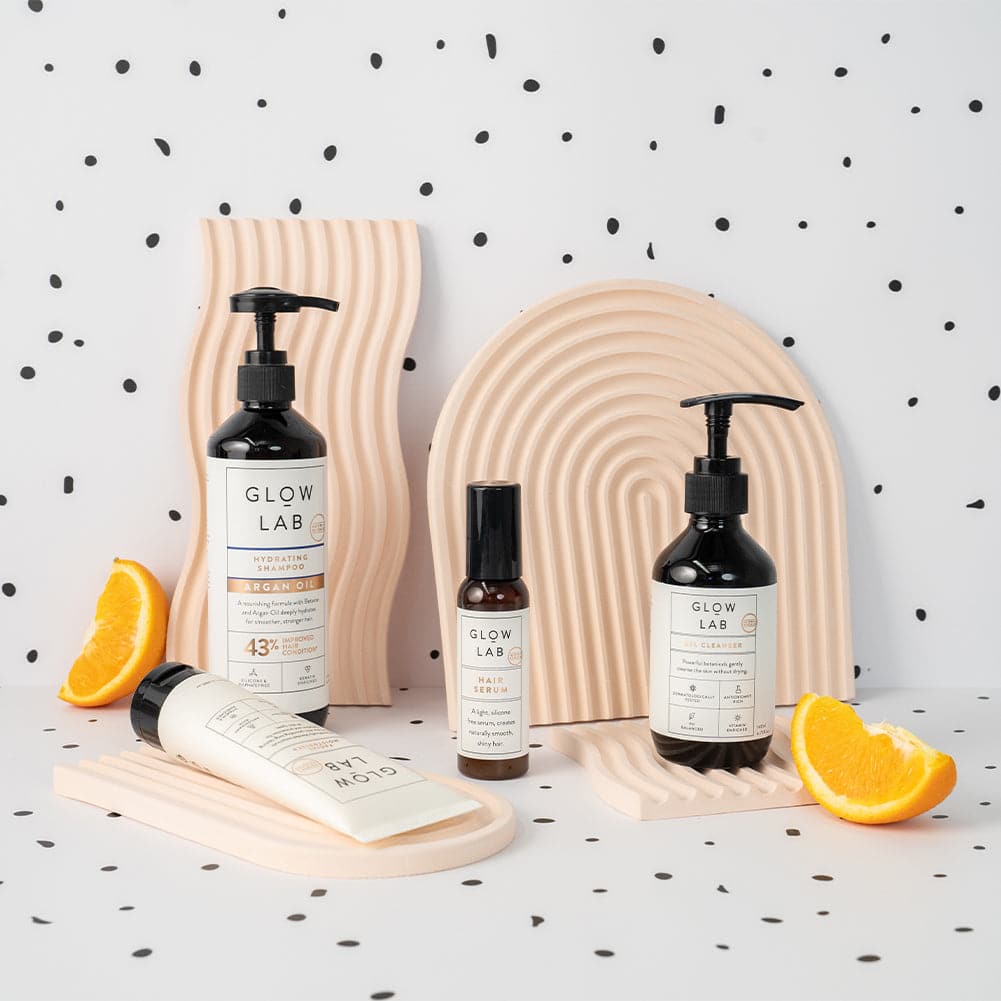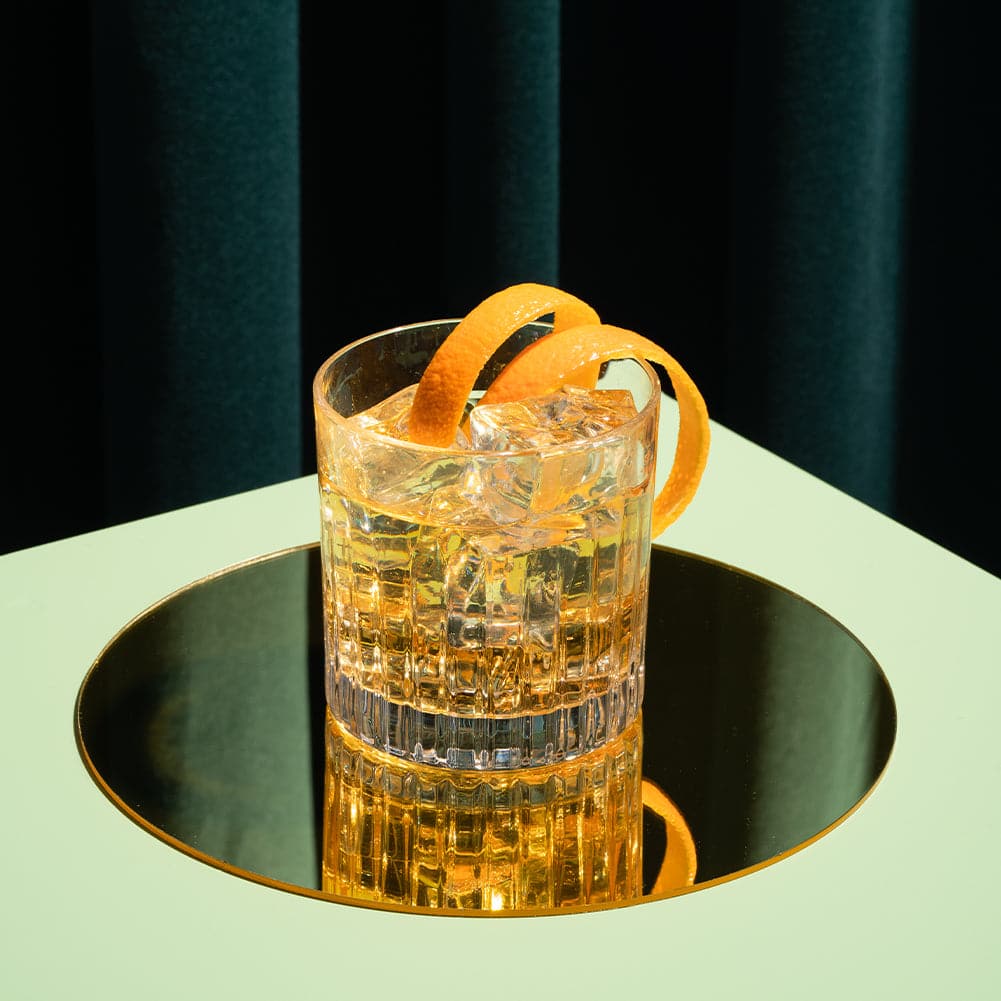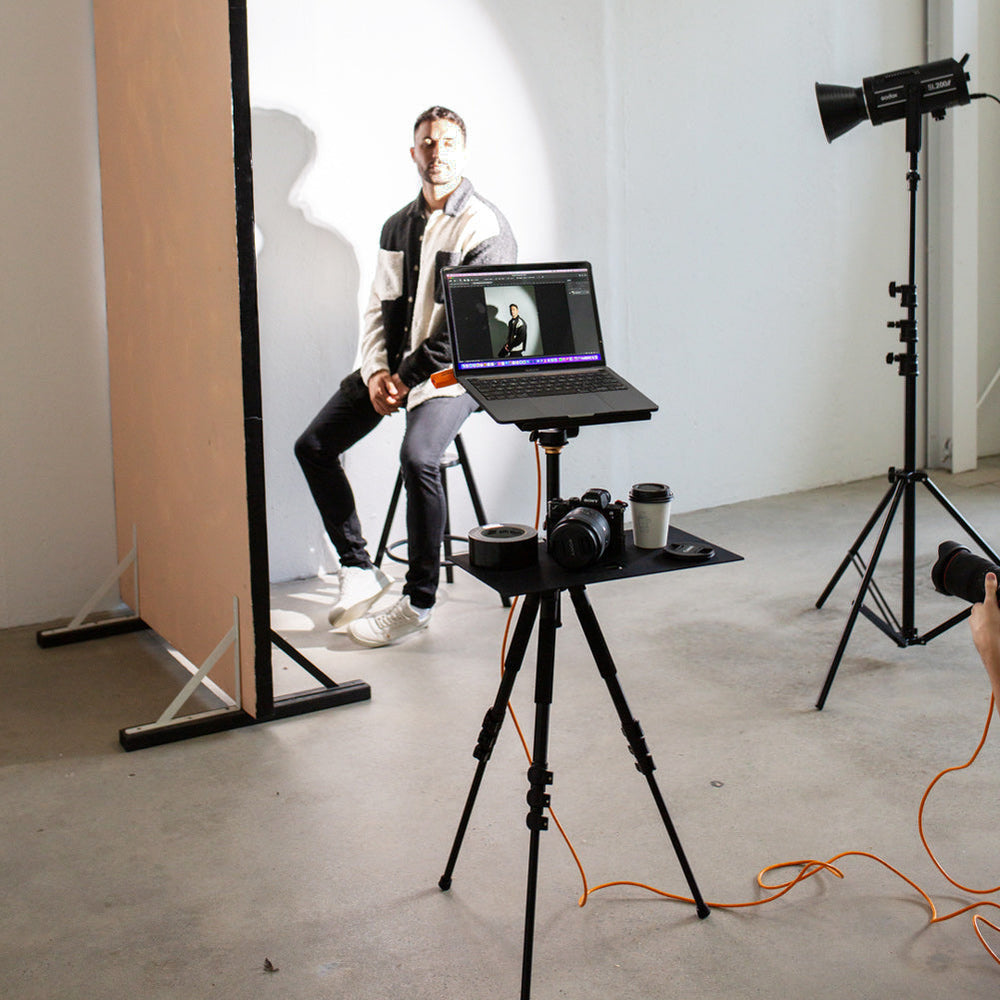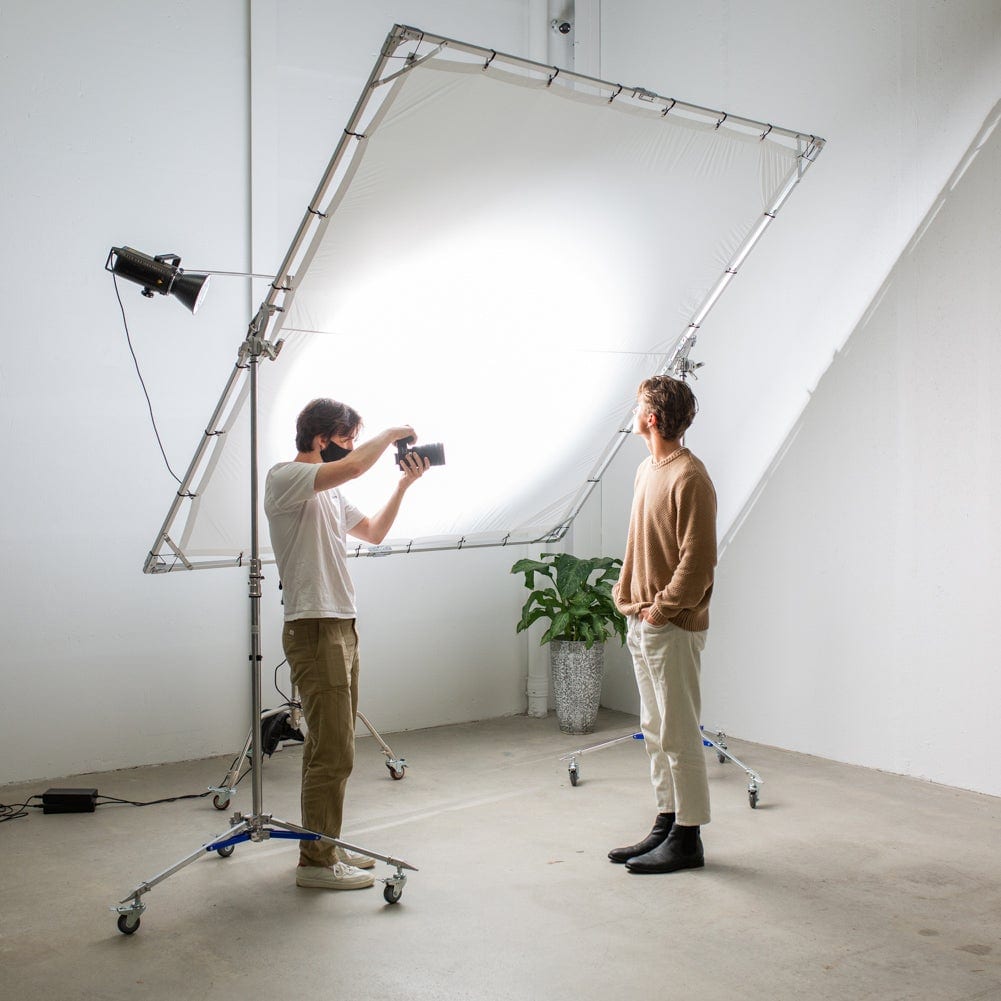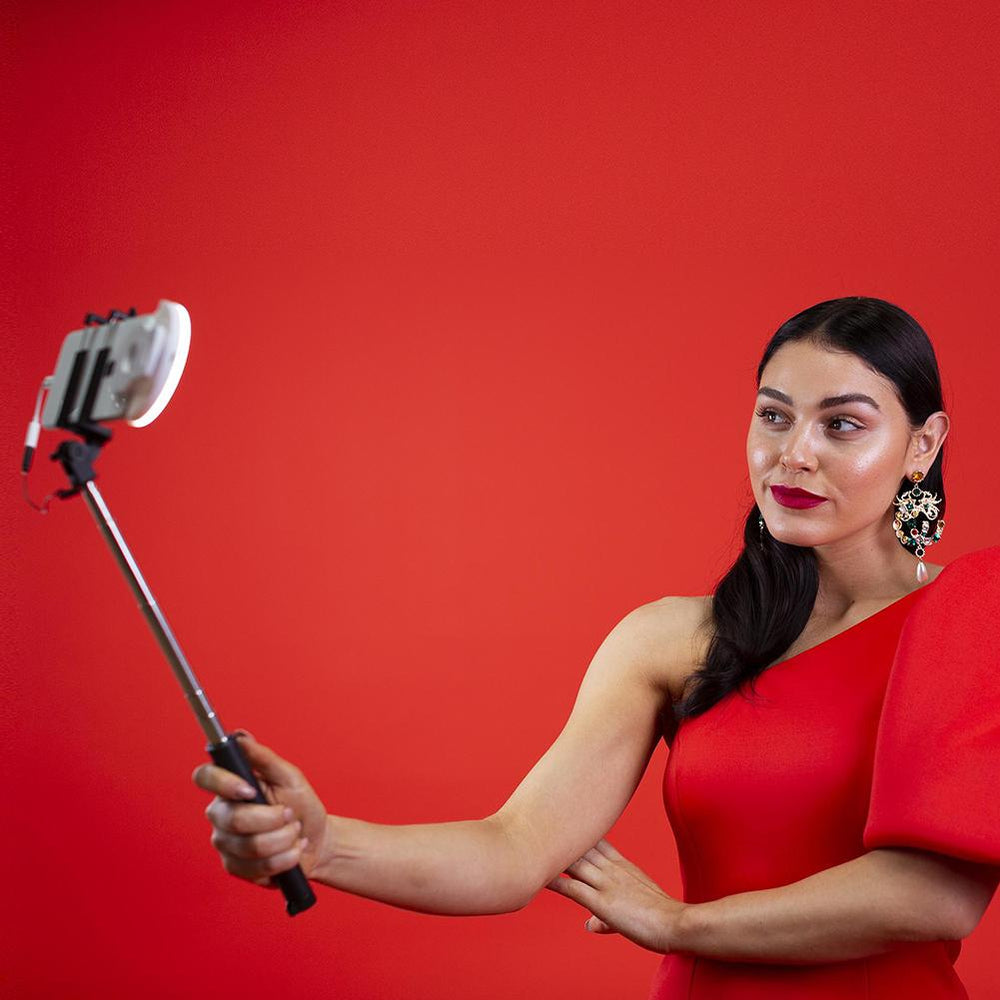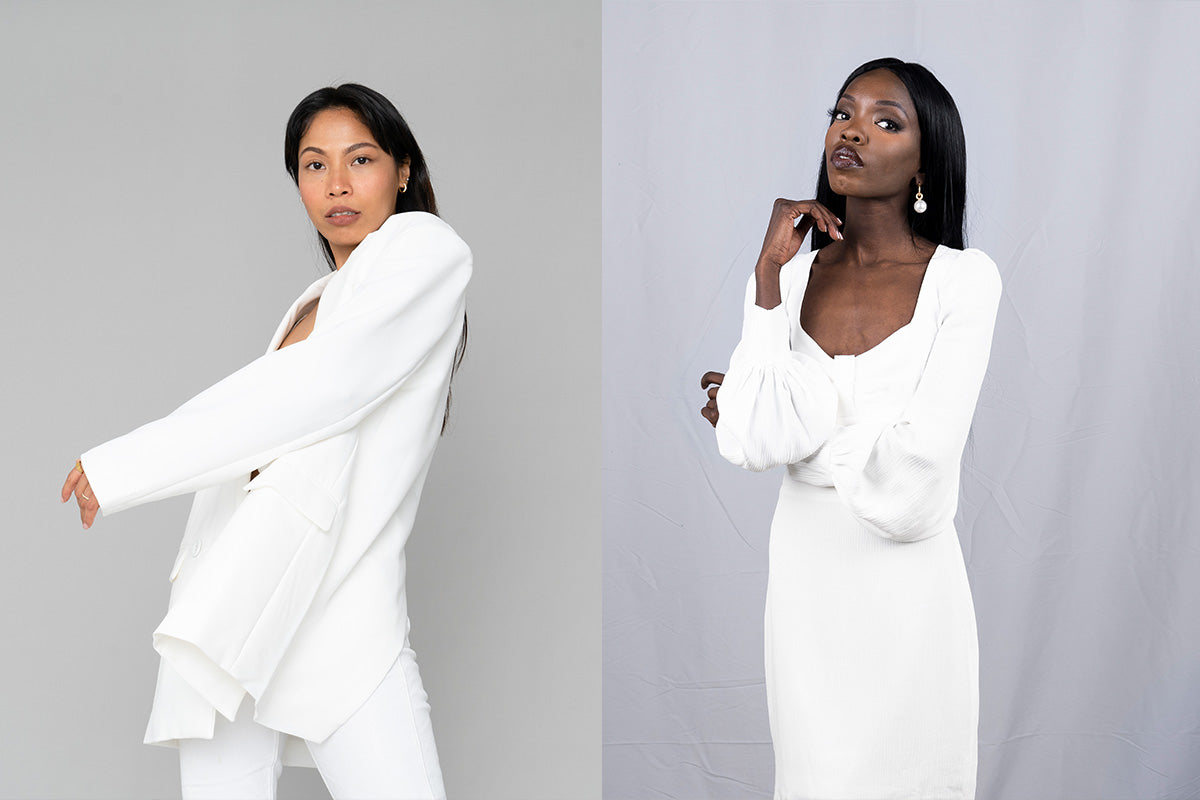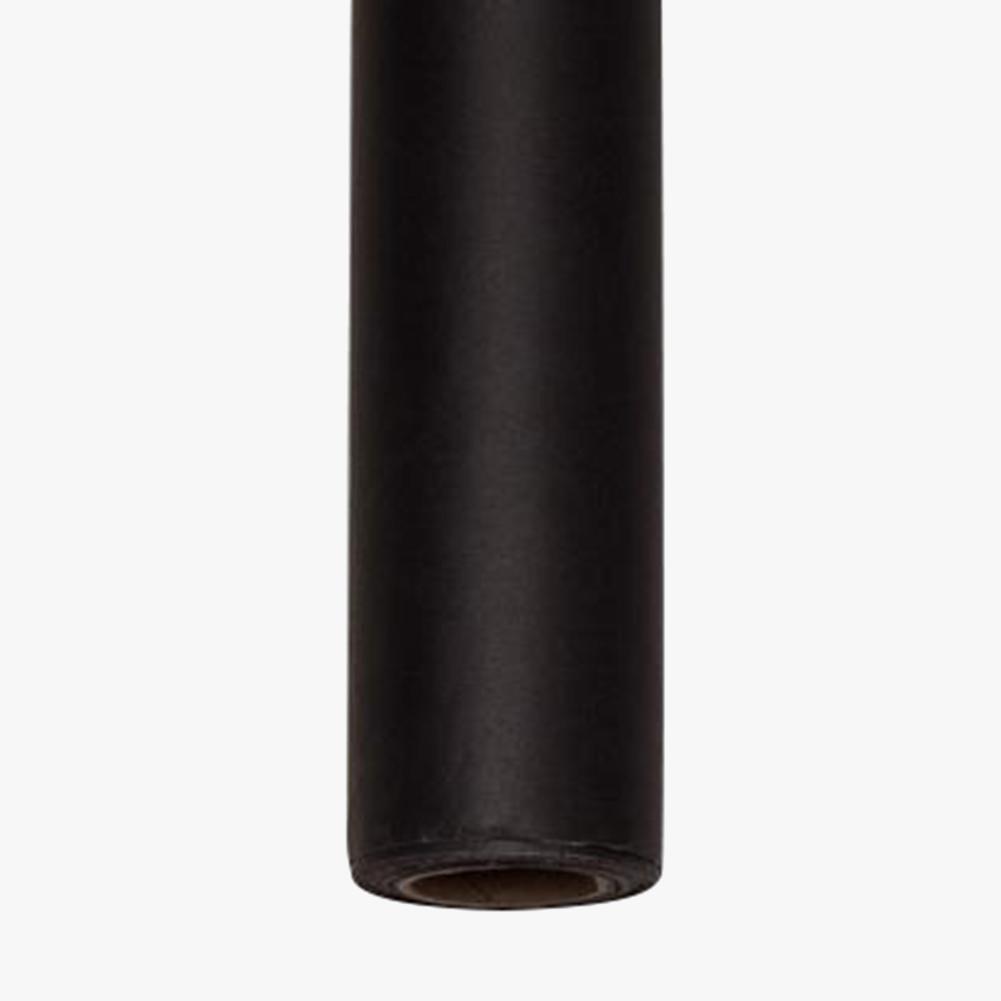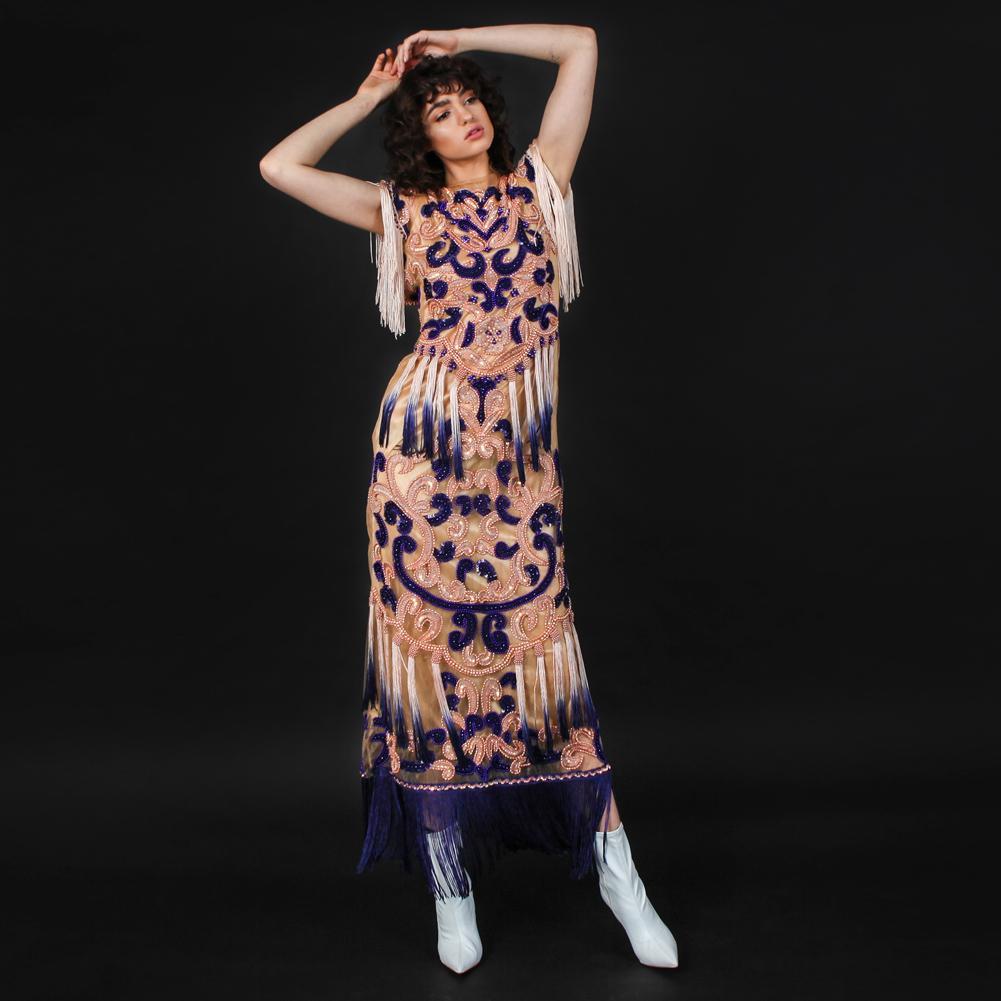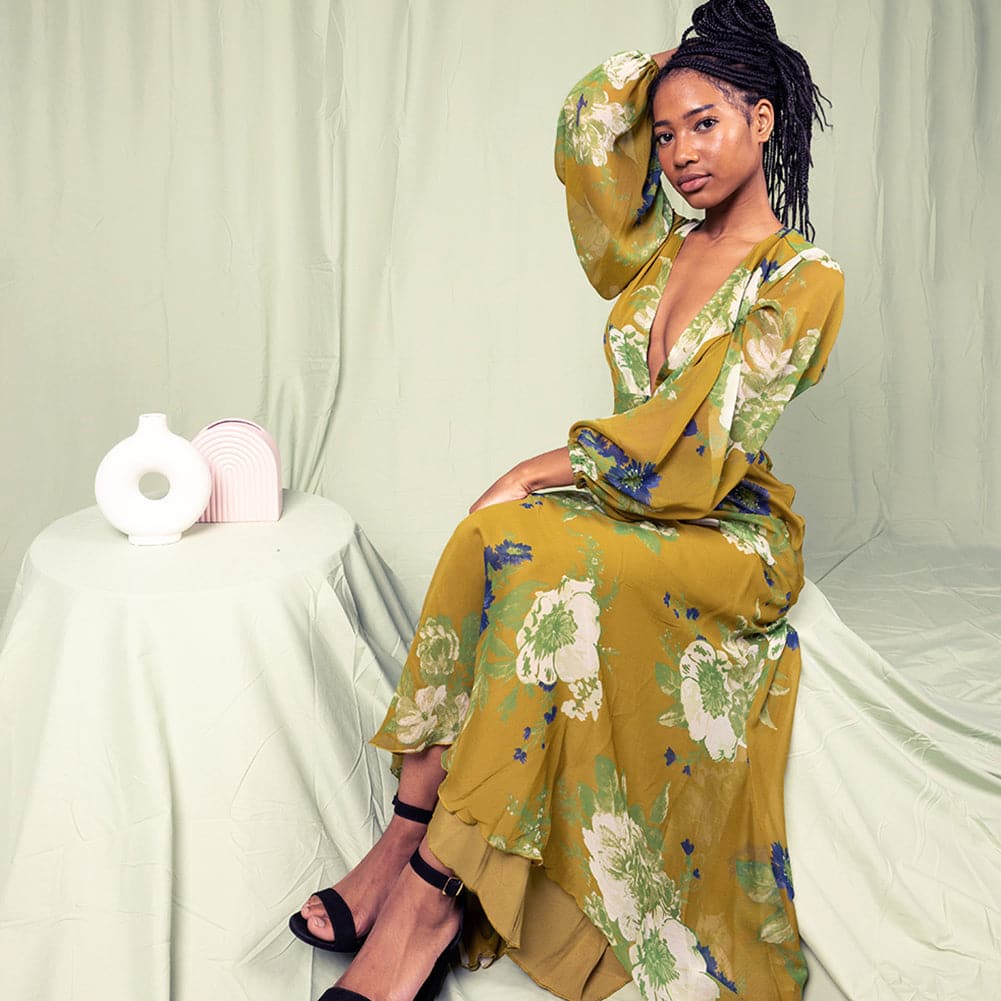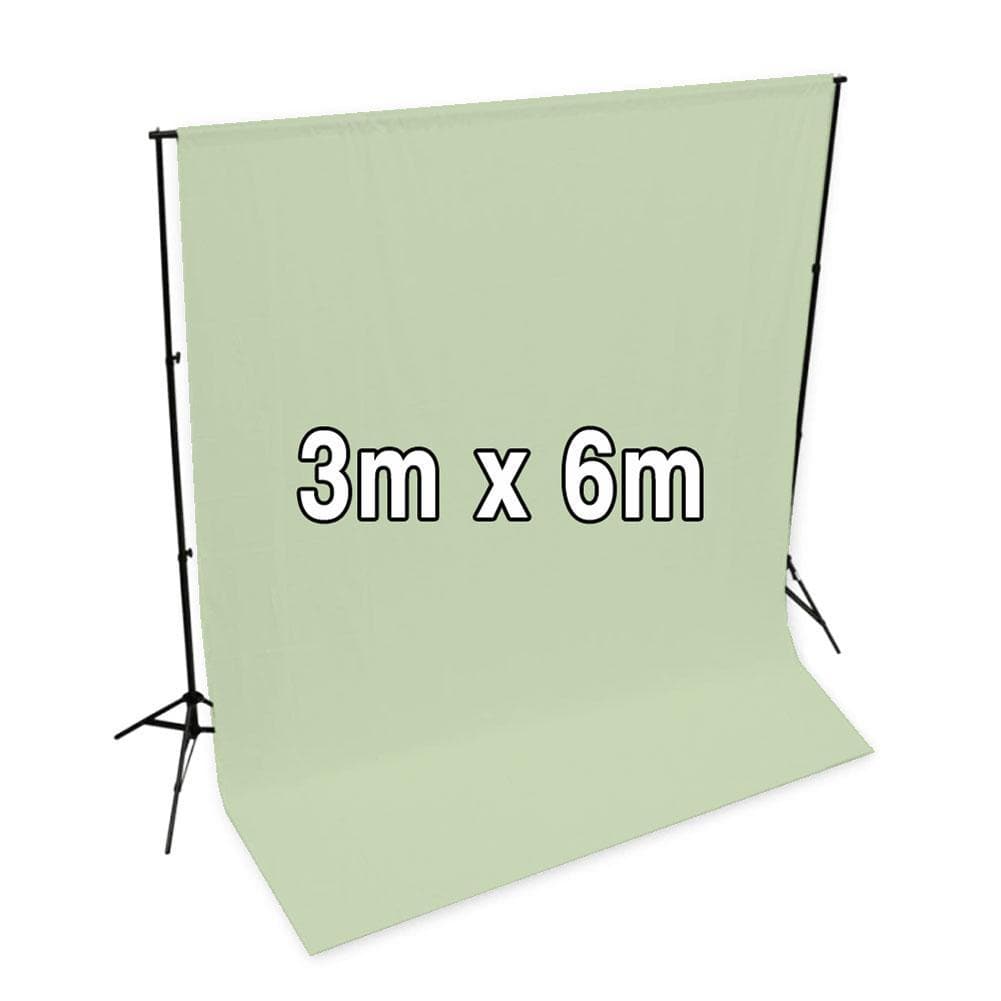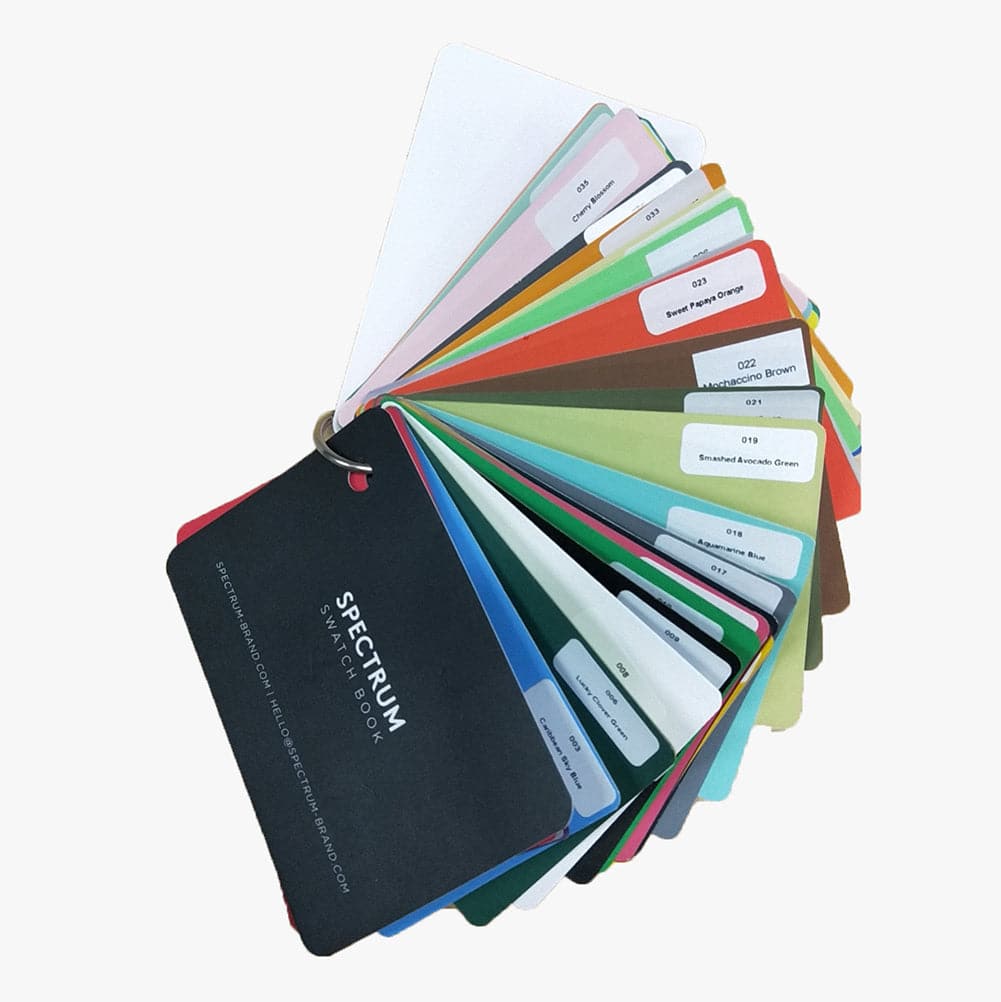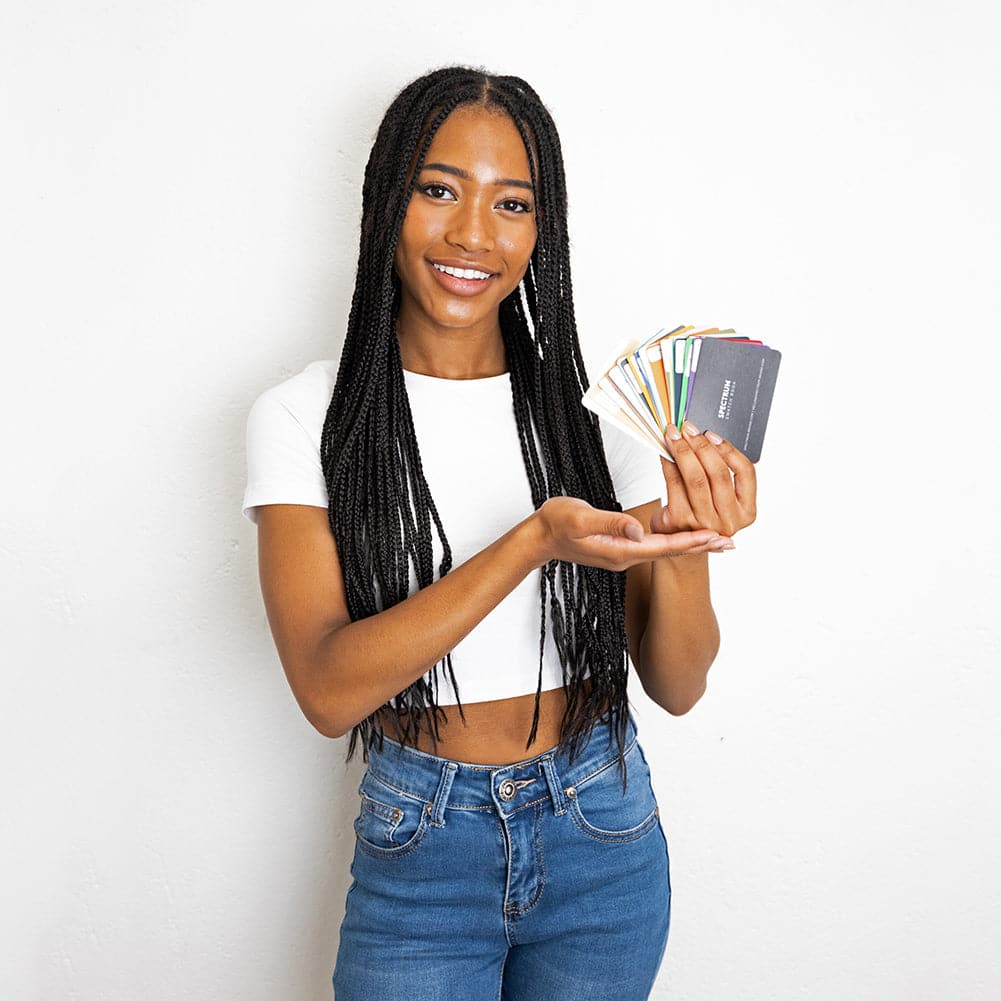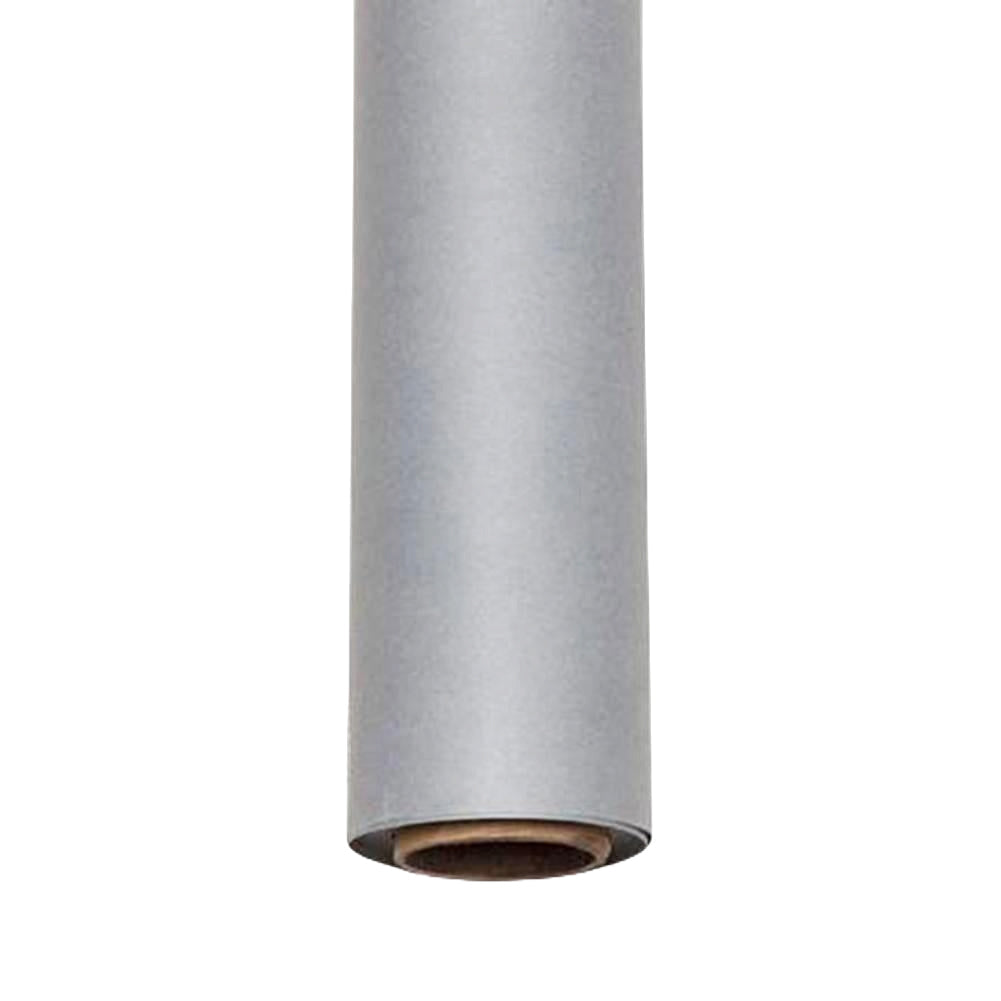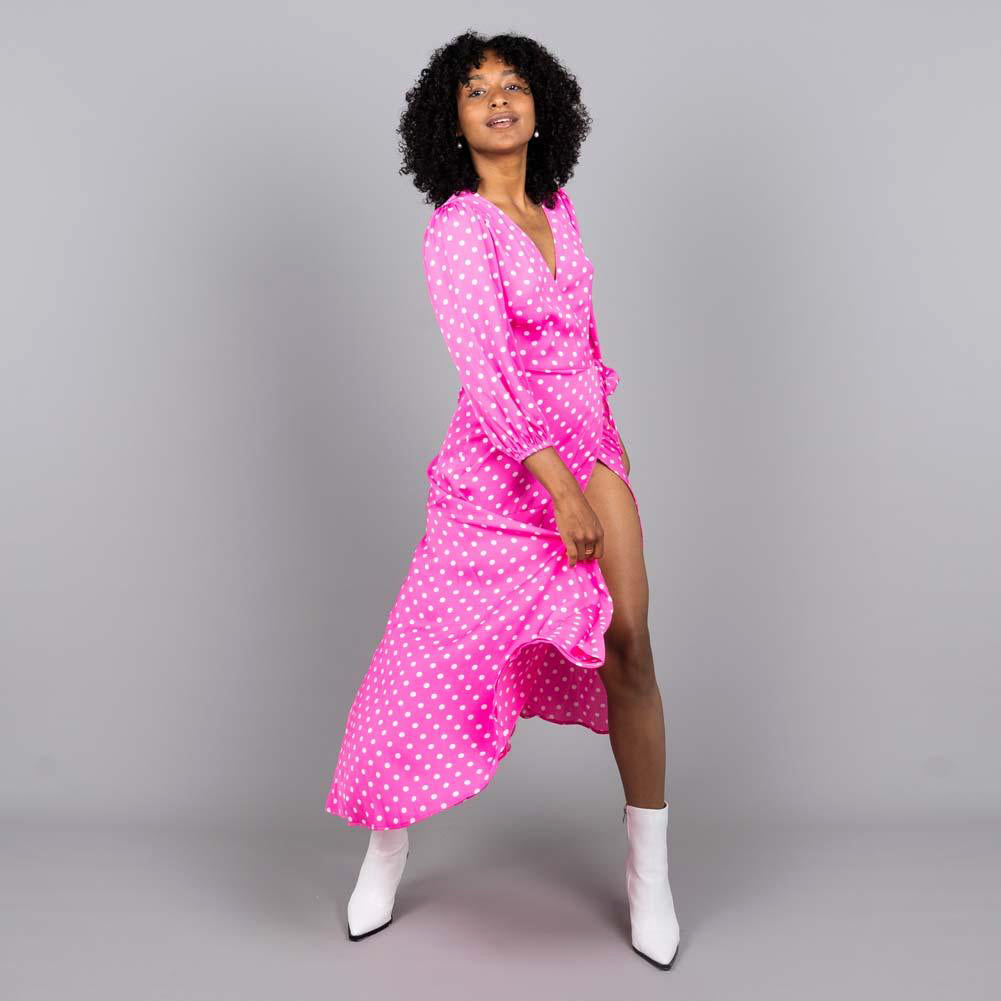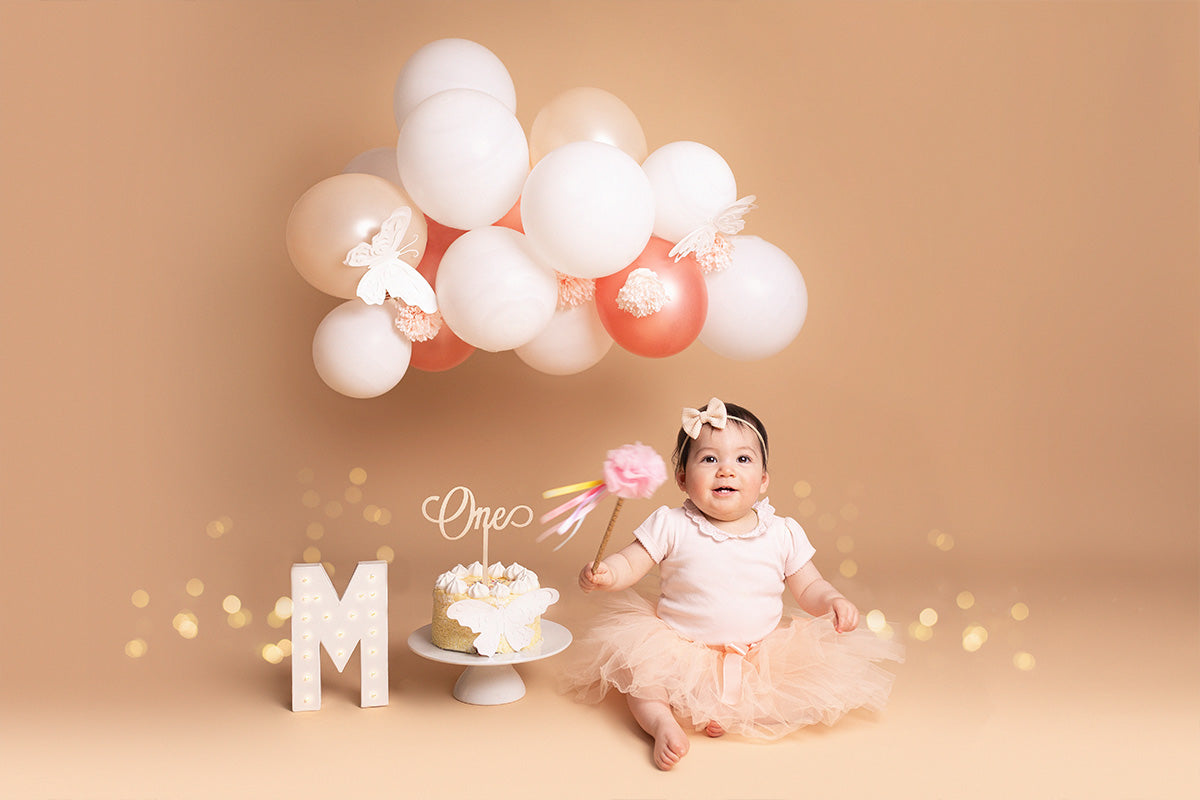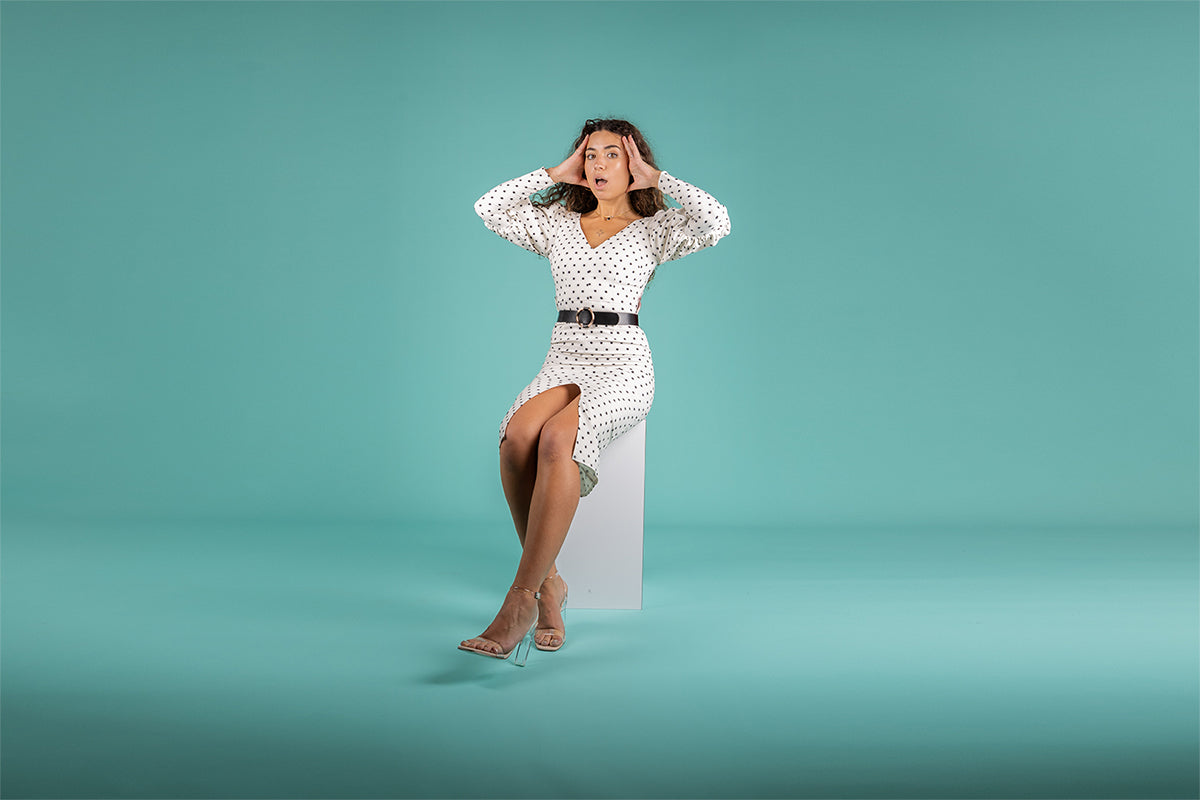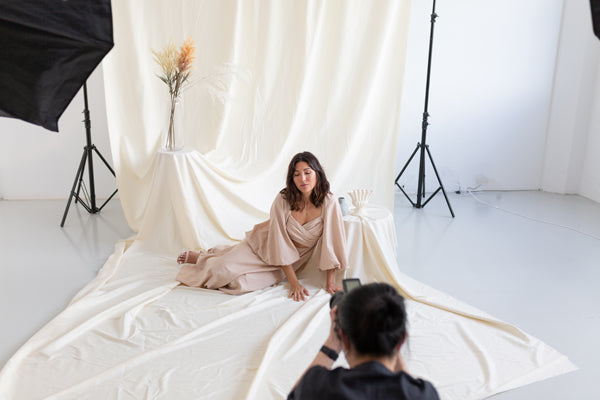Choosing the best studio backdrop for your style of photography is just as important as using a good lighting setup. The lights define the image, but the background sets the mood of the shot. Backdrops can be plain or colourful, simple or exciting. They can be seamless rolls of paper for full-body portraits or cotton muslin fabrics that are textured and flowing. These backdrops are available in a wide range of colours to add style and panache to your photography and videography. If you have a small studio, perhaps try a collapsible pop-up backdrop for half-body portraits, product shoots, or vlogging. Or use our popular and portable pull-up white backdrop for videography, headshots, e-commerce, and portrait photography.
A plain backdrop helps direct attention to the subject, whereas themed backgrounds bring extra layers of interest to the image by adding context to the scene. For example, having plates of food on flat lays featuring realistic details of a marble countertop gives the illusion that these dishes have been prepared in a stylish kitchen. The colour of your backdrop also adds emotional elements to your photos.
Colour Vs Lighting
The producers of television shows and movies know how to exploit your subconscious. Because you react on a subconscious level to the amount of light and colour in any scene, you respond in predictable ways. You are manipulated into feeling happy when you see increased brightness and vivid, warm tones. You instinctively become worried when the hero of the story enters the shadows, and you sense eeriness when they enter a landscape filled with shades of grey-blue. It’s a natural response and one that you can use to your advantage when you take portraits of people. Including coloured backgrounds in a complementary manner will add interest and atmosphere to your images.
A white backdrop is a safe and traditional choice for portraits. It is neutral against the subject, so they’ll always be the main feature regardless of what they wear. In product photography, as long as the item isn’t white, there will be contrast, making it stand out. White paper roll backdrops are essential when you want a high-key photo that is bright and airy with soft lighting and minimal shadows. They are a necessity for stock photos and headshots.
A white object requires a different approach to make it obvious. There will be no contrast against a light background, so you must use a different colour behind it. An easy and inexpensive way to achieve this is to project colour onto a white backdrop. A set of gels is an effective way to use LED light panels or studio strobes to modify a background. These gels have a steady colour temperature, low loss of light transmission, and intense saturation of colour.
Warm tones such as red, orange and yellow remind us of summer and suggest warmth. Vibrant warm-toned backdrops easily capture the viewer’s attention, especially the bold colour red, which commands attention and must be used with intention, or it overpowers a photo. Blue and grey bring winter’s coolness to an image. Green signifies the growth of spring, and its association with nature has a calming effect. You can use complementary coloured gels to make an item fit a brand or theme. Match a product and background with similar tones, and you have consistency. Another way to use contrast is to set one colour at odds with the background. If the item you photograph has warm tones, a cool background colour will make it stand out.
A simple grey background is an industry favourite for fashion portraits, product shots, and low-key photos. It’s a versatile shade that minimalists love because it is so neutral that it doesn’t clash with anything, so any subject will shine. With appropriate lighting, a black backdrop adds a dramatic and mysterious mood to a photo. But the right subject can also turn a dark background into a setting of elegance and sophistication.
Wardrobe & Skin Tone
Even if you spent a lot of money on photographic equipment and used beautiful lighting, if the colour of the backdrop clashes with the portrait subject, you wasted your time taking the photo. Establishing harmony between colours is the key to an appealing image. It’s essential to pay attention to how the colour of the subject’s hair, skin, eyes, and clothing relates to the shade and hue of the background. Check online for a colour wheel showing the relationship between all the colours of the rainbow. The opposite sides of the wheel show pleasing contrast through complementary harmony. Complementary colours have an intense but positive relationship. Look in a fashion magazine, and you’ll soon discover a photo of a woman with fiery red hair wearing an emerald green dress. It’s a classic combination of warm and cool tones, and its appeal is due to the complementary positions on the colour wheel. A clash of colours occurs when hues are too similar. Colours that are too close in the spectrum, such as orange and yellow, tend to clash because there isn’t enough contrast between them.
Which One is Right for You?
When space is limited in a studio, a small pop-up or pull-up backdrop is ideal for covering distracting elements behind the subject. If you have an area available for a permanent backdrop stand, use rolls of paper or muslin backdrops for unlimited creative options.
If you have to pack up the backdrops after each shoot, cotton muslin folds away for storage, but you will have to iron them before you rehang them. And eventually, you will have to wash them to freshen them up. Paper rolls are long and heavy but can be stored easily. Because you can cut away the ends of a paper roll when they become dirty, they always look clean and bright, which reduces editing time in post-processing.
Selecting the correct type of backdrop often depends on the kind of photography you prefer and whether you intend to have a permanent setup or a temporary studio. Once that is determined, the hard decision is choosing the colours you like. There are many exciting tones, so it’s a good problem to have.




